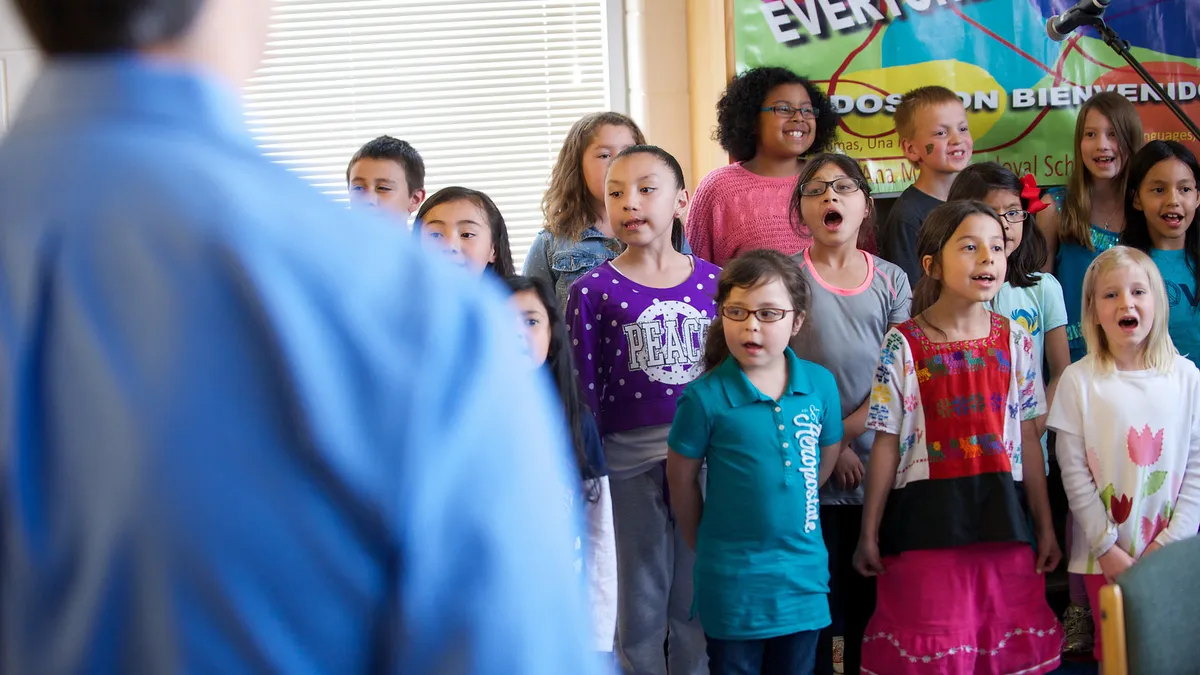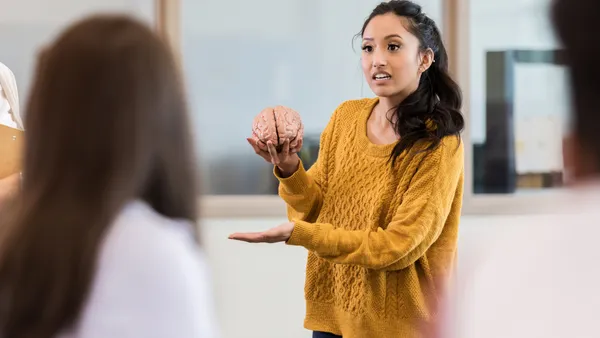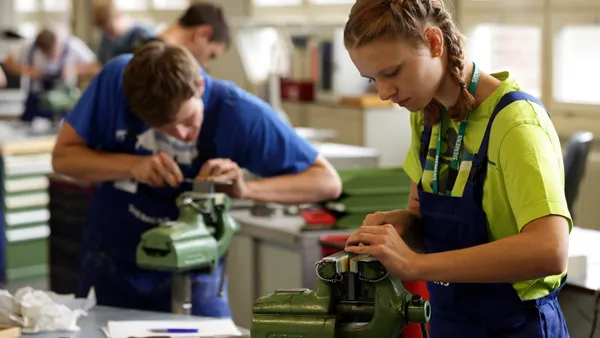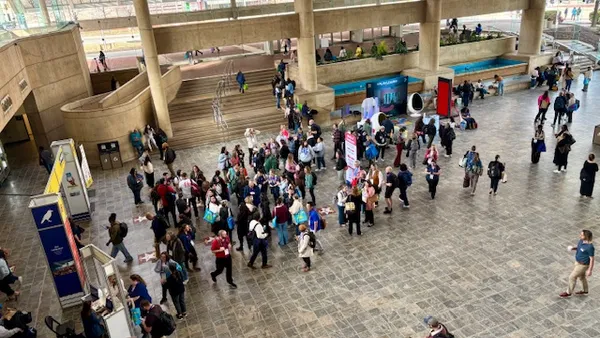Dive Brief:
- Social-emotional skills are an integral part of arts education, and arts instruction is a vehicle for addressing social-emotional learning (SEL) in schools, according to a report released Tuesday from the Consortium on School Research at the University of Chicago and Ingenuity, a nonprofit organization.
- With a review of research and examples from Chicago Public Schools, the report describes how arts experiences help students develop self-management and self-discipline, interpersonal and relationship skills, and self-expression. “Arts educators have an important role to play in social-emotional development,” the authors write, adding that the arts give students different ways to develop and use skills, such as empathy and perseverance, than do other academic areas.
- The authors stress, however, that artistic expression can also leave students with negative emotions, feeling as if they are not talented or creative. “The relevant question is not if an art practice will affect a social-emotional competency, but how it will happen and what arts educators can do to improve the odds that the impact is positive,” they write.
Dive Insight:
An overall message from the Aspen Institute National Commission on Social, Emotional and Academic Development’s two years of work was that academic learning is a social and emotional process. Artistic endeavors — whether performing, creating or responding to others’ work — likely involve even more social-emotional skills and opportunities for students to practice them. The new report has implications for school leaders who are looking for ways to reach schoolwide SEL goals or are required to show how those goals are being addressed on report cards.
The authors stress, however, that there is still much to learn about the links between the arts and SEL. “Perhaps the greatest need is for applied research that better articulates and explores the ways that specific art practices and pedagogical strategies in different contexts lead to different social-emotional competencies,” they write.
Other organizations focusing on expanding arts in schools as part of a well-rounded education are also drawing connections between arts education and SEL. Turnaround Arts: California, part of a national network of schools using the arts as a primary school improvement strategy, works with UCLArts & Healing, a center at the University of California, Los Angeles, that offers professional development and arts-based programs for schools and after-school programs. Beat the Odds, for example, combines drumming with group counseling.
At Willard Intermediate School, a Turnaround Arts middle school in the Santa Ana Unified School District in California, the school’s counselor led a four-session Beat the Odds drumming circle, including special education students, which focused on building students’ sense of community, confidence, leadership skills and collaboration. The technique was also used to help students who were having trouble adjusting to a new teacher. Incoming and outgoing teachers participated in the drumming sessions to ease the transition, according to Barbara Palley, the director of program and strategy for Turnaround Arts: California.
In addition to school districts in the Los Angeles area, UCLArts & Healing also provided training and programs in Honolulu, Milwaukee, Minneapolis and Des Moines, Iowa.
Arts Education Partnership, a project of the Education Commission of the States, also provides links to research studies, including those that connect arts to social and emotional skills. For example, a study by Alida Anderson, an associate education professor at American University in Washington, D.C., found that integrating dance and movement therapy into math lessons for students with learning disabilities, emotional/behavioral disabilities and/or attention deficit hyperactivity disorder (ADHD), led to improvements in math as well as SEL skills, such as motivation, engagement, attention and self-regulation. The findings were significant because students with those special needs often show anxiety toward learning math, according to a summary of the study.














